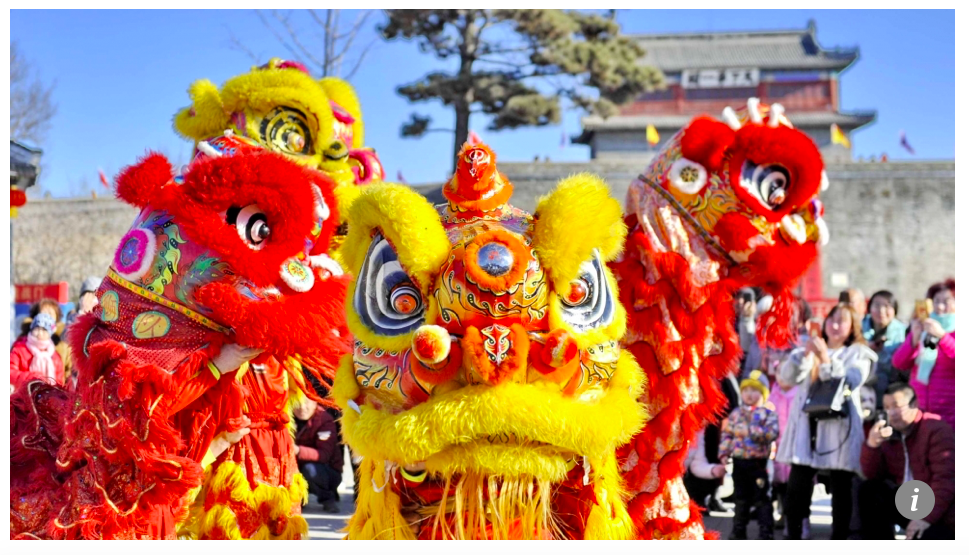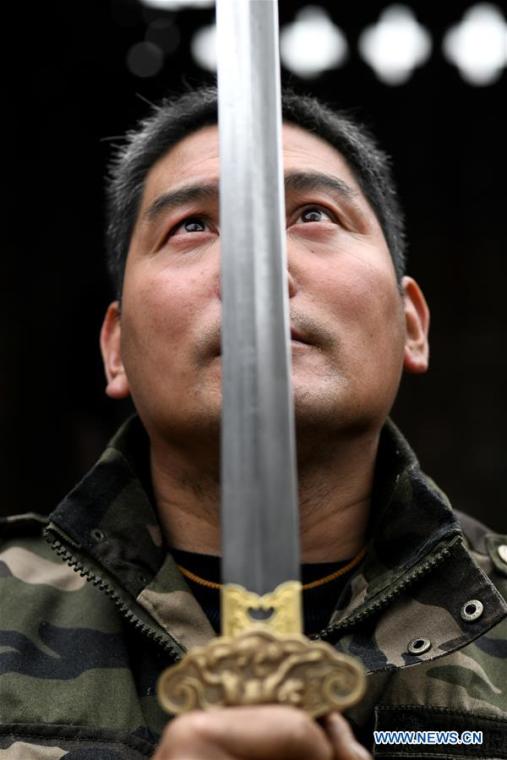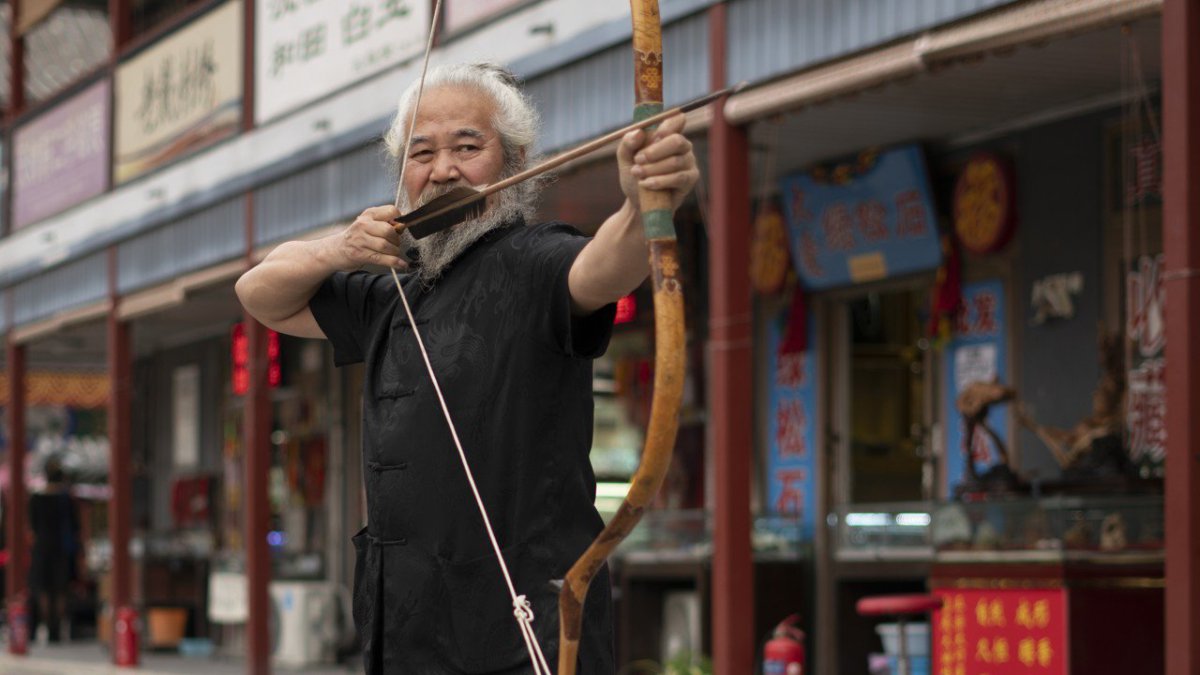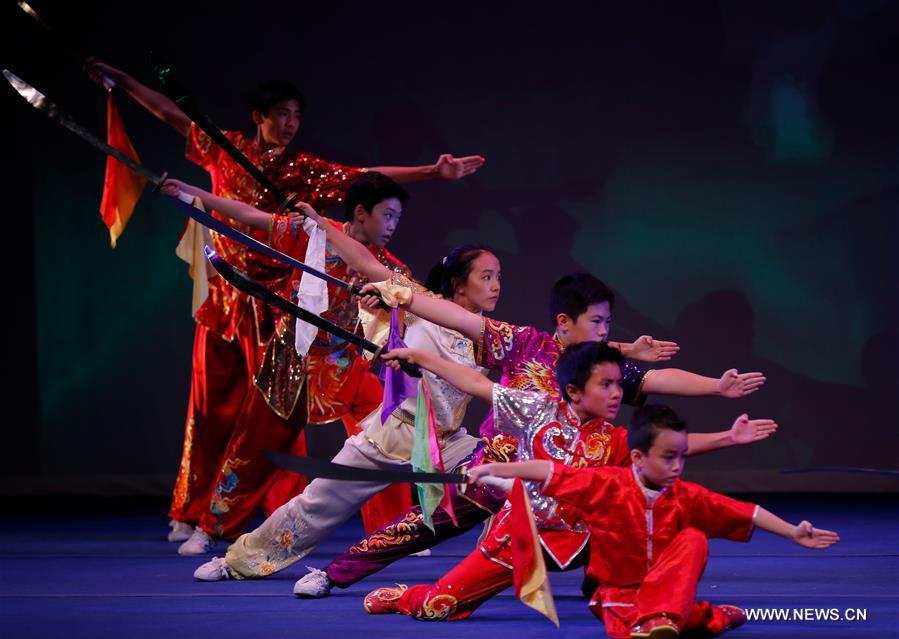
Introduction
I hope that everyone enjoyed their Lunar New Year. Its always a time of many public exhibitions and celebrations. They, in turn, generate an uptick in news coverage of local martial arts practices and well as Lion Dancing. Most of the articles included in this update include a fair amount of self-conscious public performance, though that happens in many registers. As such, we will have a lot to talk about.
For new readers, this is a semi-regular feature here at Kung Fu Tea in which we review media stories that mention or affect the traditional fighting arts. In addition to discussing important events, this column also considers how the Asian hand combat systems are portrayed in the mainstream media.
While we aim to summarize major stories over the last month, there is always a chance we may have missed something. If you are aware of an important news event relating to the TCMA, drop a link in the comments section below. If you know of a developing story that should be covered in the future feel free to send me an email.
Its been way too long since our last update so let’s get to the news!
News From All Over
Our first article comes from the pages of the ever reliable South China Morning Post Magazine. Don’t let the somewhat awkward title (a classic case of editorial over-reach) throw you off (“Me and my uncle Ip Man taught Bruce Lee Wing Chun kung fu. He was rubbish when he started“). The article is well worth reading, and doesn’t really have much to do with Bruce Lee. Instead its a largely autobiographical reminisce by Lo Man Kam (86). Students of Wing Chun history will probably remember him as Ip Man’s nephew and the individual who introduced the art to Taiwan. There is some nice discussion in this piece. Its definitely one to keep filed away for future reference.
Regular readers may recall that in our last news update we saw that the city of Shanghai was staging a number of celebrations around its Jingwu heritage. That seems to have become a small, but notable, aspect of its tourism portfolio. Those events also carried over into this month’s roundup. Jingwu enthusiasts had special plans to mark Master Huo Yuanjia’s 150th birthday. The article also includes a short promotional video that maybe of interest.
While not really a “headline grabbing” piece, the next article is probably my favorite in this news roundup. It examines how a shopping mall in south Edmonton Canada became a Taijiquan hub for local senior citizens.
Shoppers at a south Edmonton mall may not realize the hallways between the stores have a secret — they’ve quietly turned into an improvised community centre on weekday mornings.
Between 8:30 and 10 a.m., Monday to Friday, around 100 people gather in Southgate Centre before the stores open.
Five separate tai chi classes, a dance class and mall walking groups have set up in the hallways. Many of the participants are seniors, who credit the classes with keeping them happy and healthy.
It is interesting to see this very organic expression of Chinese martial art culture taking root in a global context, and it might make a great case study for any anthropologists or ethnographers who happened to be in the area.
Of course the Chinese martial arts are all about balance. Where there is Taijiquan there must also be Shaolin. That brings us to our next story. Its a somewhat longer piece than you typically see in a local paper. It profiles Hu Cheng and his journey from being a martial arts student in Dengfeng, to the traveling Shaolin Warrior Corp, to eventually landing as a hand combat instructor in Jefferson City. I think that many of us will already be familiar with the basic outlines of this career pattern, but its always interesting to see how the individual details of the thing play out.
Hu Cheng isn’t the only Shaolin Warrior Monk to be in the news. This guy has been getting a lot of attention due to his awesome Instagram account and fast feet. Interesting example of social media in the modern Chinese martial arts (which is, of course, is a huge thing).
Next we have a pair of South China Morning Post articles examining the changing status of Lion Dancing in contemporary China. The first is titled (rather ominously) “GOING, GOING, GONG: WHY IS LION DANCE DYING IN SINGAPORE AND HONG KONG, BUT ROARING BACK TO LIFE IN CHINA?” Its well worth reading, but the answers it proposes are far from complex. Basically parents in Hong Kong and Singapore strongly prioritize academic education which leaves little time for any sort of extra-curricular activities. This has also been cited as a significant factor contributing the declining fortunes of Kung Fu in the region. But in the PRC Lion Dancing is increasingly finding its way into the schools as institutions look for ways to boost their “cultural education” efforts.
However, as our next article reminds us, Lion Dancing isn’t faring equally well throughout China. Its popularity is really centered in the South, and can be seen most strongly in places like Guangzhou and Foshan. In the North its more of a struggle to keep these traditions alive. However, efforts to preserve Southern China’s cultural heritage and family traditions are propelling its Lion Dancing into the future. This piece may be of special interest to Wing Chun, Hung Gar or Choy Li Fut students as it focuses very heavily on what is going on in contemporary Foshan.
Lion Dancing is probably most commonly seen during the New Year festival. Indeed, all sorts of martial arts demonstrations are traditionally staged at this time of year. And none is larger than the one that Chinese state TV puts together for their annual gala broadcast. If thousands of students doing Taijiquan in unison, or making massive red flags, is your of thing, you will want to check this out…Its almost like there is some sort of discursive relationship between the Chinese martialists and the state….

Next we have something for the “Kung Fu Diplomacy” file. Lets start with this aptly titled, official press release “Chinese Tai Chi tour seeks global reach, and its first stop is America.“
“SAN FRANCISCO, Feb. 8 (Xinhua) — Byron Hartman wants to expand the reach of Tai Chi in America and beyond. He has just completed a near-perfect demonstration of his skills learned over the years from several martial arts masters.
“Chinese Tai Chi martial art is good for everyone and the Chinese people have enjoyed it, but we want to bring this art to the world,” Hartman, a biologist at Stanford University.”
Gene Ching, of Kung Fu Tai Chi Magazine, was also there and posted a bunch of pictures from the event to Facebook. I expect that we will be seeing some reporting on the gathering from an American perspective soon. In the mean time, check out their photos.
I think that this article, profiling a Wing Chun instructor in Turkey, could probably also be classified as a bit of cultural diplomacy.

Our next article (also from the SCMP) is a classic example of milking the internet’s outrage machine. Xu Xiaodong, who has made a career of exposing frauds within the traditional Chinese martial arts (or simply exposing the TCMA as a fraud…his mission seems to vary from one interview to the next) has set his sites on a new opponent, namely Bruce Lee himself. If you think about it Lee is really the ideal target. He can’t punch back, yet his outraged fans will generate tens of thousands of internet clicks. Here is my favorite line from the interview, if for no other reason that it appears to be stunningly un-self-aware from someone who is increasingly criticized for choosing only the weakest opponents for his social-media-fueled beatdowns.
“When you look at Bruce Lee sparring footage, look at who he’s fighting, what kind of qualification the person has, you have to understand that,” Xu added.
Yes indeed. Whatever the value of Xu’s initial efforts, it seems that he has decided that the best way to make a living with MMA is not to actually fight other professionals, or even to teach his skills. Rather, he is transforming himself into the “Heel” of a cultural wrestling match that takes all of the Chinese martial arts (in every form and at every time period) as his own personal ring. So, of course, the next logical step in the evolution of his public persona would be to start a feud with a movie star who has been dead for more than four decades…or to troll the entire city of Hong Kong.
Lets continue on with the “drama department” for a bit. The Shanghai Daily has proclaimed that a “Play dedicated to iconic martial arts’ master is a knockout.”
A play dedicated to the memory of legendary martial arts master Cai Longyun recently premiered at the Magnolia Theater in Shanghai.
The play “Cai Longyun,” produced by Shanghai University of Sport, where Cai worked as a professor, took 18 months of research, script writing and rehearsals.
Cai shot to fame when he was only 14 years old by defeating an internationally renowned Russian fighter named Marceau Love – a man 11 years his senior.
His victory against the 25-year-old provided a boost to China, who at the time was often referred to by foreigners as the “sick man of Asia.”
If dance is more your thing you might instead want to check out “A Martial Arts Ballet” in which kicks, flips and dance take on a contemporary flare.
What would it look like if the New York City ballet’s corps of ballerinas were replaced by 20 kung fu Buddhist monks? Sutra, choreographed by Sidi Larbi Cherkaoui and with music by Szymon Brzóska, is as close an answer as you’re likely to get. The hourlong performance melds contemporary dance with the fighting techniques of China’s famous Shaolin martial arts.

And it is time to rejoice as “Kung Fu Hustle 2” has just been announced. This film has always been a personal favorite. And apparently I am not alone in that as the new project generated dozens of announcements and articles. You can read more about it here.
It is African American History month and I noticed that the “The Black Kung Fu Experience” has been getting some new screenings. Definitely check this out if you haven’t already seen it.
A film showcasing the careers of early black martial arts icons left its small audience wanting more.
“The Black Kung Fu Experience,” a 2012 documentary directed by Martha Burr and Mei-Juin Chen, was screened in the Fox Room at Rutland Free Library on Saturday. The event was hosted by the Rutland NAACP to coincide with Black History Month.
The film follows the careers of several black martial artists, such as Rob Van Clief, Donald Hamby and Dennis Brown, who among others became interested in the martial arts from watching Chinese Kung Fu-themed films, which were popular with American audiences in the late 1960s and 1970s.
Martial Arts Studies
Its time for an update of what has been happening in the scholarly discussion of the martial arts. First off, we recently released Issue 7 of the journal. As always, anyone with an internet connection can read it free on Cardiff University Press webpage. Feel free to download or trade PDFs of individual articles or the entire issue. Readers of Kung Fu Tea may want to take a look at the very first article on the history and evolution of Wing Chun in Germany (full disclosure, I am a co-author on that piece). But everything in the issue is great. Check it out!
I realized that its been a while since we have talked about new books in the field. Publishers have announced a number of upcoming projects. Here are a couple that I thought were especially exciting.
John Christopher Hamm. 2019. The Unworthy Scholar from Pingjiang: Republican-Era Martial Arts Fiction. Columbia University Press. Released August 2019.
Xiang Kairan, who wrote under the pen name “The Unworthy Scholar from Pingjiang,” is remembered as the father of modern Chinese martial arts fiction, one of the most distinctive forms of twentieth-century Chinese culture and the inspiration for China’s globally popular martial arts cinema. In this book, John Christopher Hamm shows how Xiang Kairan’s work and career offer a new lens on the transformations of fiction and popular culture in early twentieth-century China.
The Unworthy Scholar from Pingjiang situates Xiang Kairan’s career in the larger contexts of Republican-era China’s publishing industry, literary debates, and political and social history. Writing at a time when writers associated with the New Culture movement promoted an aggressively modernizing vision of literature, Xiang Kairan consciously cultivated his debt to homegrown narrative traditions. Through careful readings of Xiang Kairan’s work, Hamm demonstrates that his writings, far from being the formally fossilized and ideologically regressive relics their critics denounced, represent a creative engagement with contemporary social and political currents and the demands and possibilities of an emerging cultural marketplace. Hamm takes martial arts fiction beyond the confines of genre studies to situate it within a broader reexamination of Chinese literary modernity. The first monograph on Xiang Kairan’s fiction in any language, The Unworthy Scholar from Pingjiang rewrites the history of early-twentieth-century Chinese literature from the standpoints of genre fiction and commercial publishing.
Xiang Kairan was an important figure in the Republic-era intellectual history of the Chinese martial arts. I have even discussed him a few times on the blog. So its nice to see a more focused study of his writings.

Ana Paula Höfling. 2019. Staging Brazil: Choreographies of Capoeira. Wesleyan University Press (June 4, 2019)
Staging Brazil: Choreographies of Capoeira is the first in-depth study of the processes of legitimization and globalization of capoeira, the Afro-Brazilian combat game practiced today throughout the world. Ana Paula Höfling contextualizes the emergence of the two main styles of capoeira, angola and regional, within discourses of race and nation in mid-twentieth century Brazil. This history of capoeira’s corporeality, on the page and on the stage, includes analysis of early-illustrated capoeira manuals and reveals the mutual influences between capoeira practitioners, tourism bureaucrats, intellectuals, artists, and directors of folkloric ensembles. Staging Brazil sheds light on the importance of capoeira in folkloric shows in the 1960s and 70s―both those that catered to tourists visiting Brazil and those that toured abroad and introduced capoeira to the world.
Sergio González Varela. 2019. Capoeira, Mobility, and Tourism: Preserving an Afro-Brazilian Tradition in a Globalized World. Rowman & Littlefield (Releases July 2019)
In Capoeira, Mobility, and Tourism: Preserving an Afro-Brazilian Tradition in a Globalized World, Sergio González Varela examines the mobility of capoeira leaders and practitioners. He analyzes their motivations and spirituality as well as their ability to reconfigure social practices. Varela draws on tourism mobilities, multi-sited ethnography, global networks, heritage, and the anthropology of ritual and religion in order to stress the commitment, dedication, and value that international practitioners bring to capoeira.
The next book isn’t exactly a scholarly volume, but I am pretty sure that it will interest many Kung Fu Tea’s readers. And better yet, this one has not wait time. Its shipping now.
Michael Matsuda. 2019. Martial Arts History Museum: The Story of How the Museum Began. Amazon Digital Services
The Martial Arts History Museum is the first, and only museum of its kind in the world. It is not a who’s who of the martial arts, rather, it is an educational facility revealing how Asian history became part of American history. It is an insight into culture, tradition and history. The book provides an in-depth look at how the museum began, the 12-year they took and the roadblocks they faced along the way. This is a unique way to get acquainted with the museum, its founder and how they gathered the martial arts world together to launch a museum dedicated to the martial arts. You will enjoy this journey and I assure you, you will finish this book quickly because it is so compelling.

Kung Fu Tea on Facebook
A lot has happened on the Kung Fu Tea Facebook group over the last month. We discussed multiple translations of classic Chinese martial arts manuals, the history of Xingyi Quan, and the search for a cure for Ninjutsu, a serious disease that effects thousands of martial artists each year. Joining the Facebook group is also a great way of keeping up with everything that is happening here at Kung Fu Tea.
If its been a while since your last visit, head on over and see what you have been missing!































































